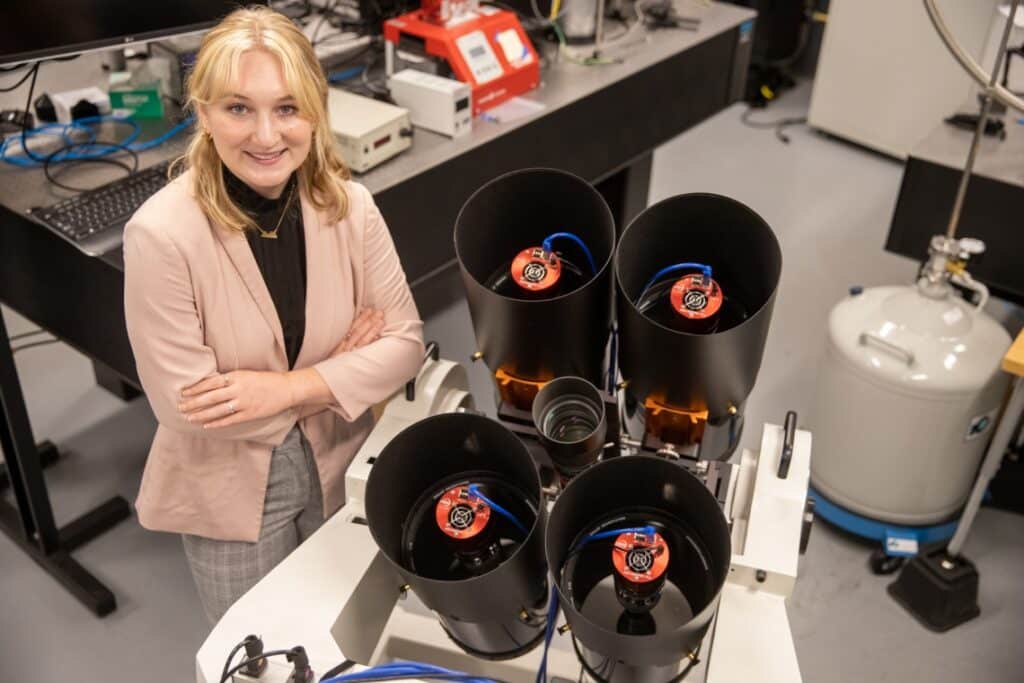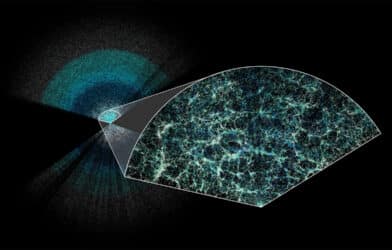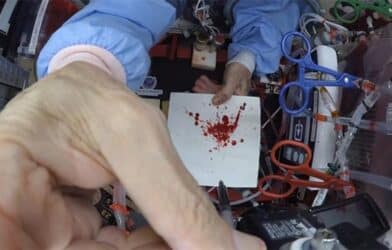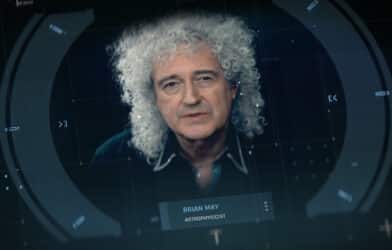If you’ve been looking up at the sky at night and wondering why it seems like there are more satellites in the sky than ever before, you’re right. There are — and they’re getting brighter, too. New mega-constellations of SpaceX Starlink satellites orbiting our planet are shining extra-bright light into those same dark skies. And astronomers are not happy about it.
Most of modern astronomy relies on having dark skies so that astronomers can see fainter objects — but now those same dark skies are being over-lit by thousands of satellites, ranging from the size of refrigerators to cars. While these constellations bring next-generation technology and services down to Earth, they also spark concerns about how they will impact astronomical observations.
In particular, it’s feared that bright streaks from passing satellites could hinder telescopic observations, as well as create light pollution for dark sky locations.
A team of students at the University of Arizona began tracking and measuring brightness from SpaceX’s Starlink constellation when they realized that the problem will only get worse for ground-based astronomical surveys. The result? About 30% of all telescope images will be impacted by at least one satellite trail when Starlink is complete.
Their findings could help improve how we track and monitor our planet’s ever-growing collection of orbiting machines — and find ways to notify astronomers of their incoming orbit before they cross their long-exposure images.
Using data to avoid satellite ‘photobombs’
Grace Halferty, lead author of the comprehensive study, notes that measuring the brightness of satellites has only been observed by the naked eye until now. With that in mind, the team used a ground-based sensor to track and characterize the brightness of satellites.
“Until now, most photometric – or brightness – observations that were available were done by naked eye,” Halferty explains in a statement. “This is one of the first comprehensive photometric studies out there to go through peer review. The satellites are challenging to track with traditional astronomical telescopes, because they are so bright and fast-moving, so we built what’s basically a small sensor with a camera lens ourselves because there was nothing off the shelf available.”

With 353 measurements of 61 satellites over two years, researchers say that the position of Starlink satellites as recorded in the government’s Space Track Catalog followed a small, natural lag in their orbits.
When a satellite crosses the path of a telescope, it can be hard for astronomers to get the imagery they need. For astronomers, the new data set is a gift. With it, they can get the full picture before a satellite crosses their path and ruins their photo. Although they can stop their imagery before a satellite crosses their path, doing so will add to overall operating costs.
What is the SpaceX Starlink constellation?
SpaceX has been manufacturing and launching a mega-constellation of satellites called Starlink to provide global internet coverage. The aerospace company started its first launches in 2019 and plans to launch more in the future. Their “Gen2” satellites are 22 feet long and weigh 2,755 pounds, way larger than the first-generation satellites that only weigh 573 pounds.
Astronomers are concerned that the proposed 42,000 satellites that make up the Starlink mega-constellation will obscure the night sky when they attempt to capture long-exposure imagery.
SpaceX is deploying several methods to make its Starlink satellites less visible. The first method involves adding a visor to the satellites, which acts as a shield that blocks additional sunlight, making them 1.6 times fainter. While this will make it harder to see with the naked eye, astronomers using high-powered telescopes will struggle to capture the cosmos without a satellite photobomb.
The research is published in the journal Monthly Notices of the Royal Astronomical Society.













Pox on Elon. He couldn’t manage a couple of geostationary satellites?
Oh please…
Starlink is a threat to earthbound ISPs that have had a stranglehold on internet users for decades.
That’s why we’re seeing an article like this…nothing else.
still sucking the kool-aid from #woodyelon ‘s cock? Starlink is a disaster on a scale only a retard like musk could dream up.
Guess that settles it. Musk owns the night sky. We have to pay to see it now.
Starlink satellites are only visible during twilight hours. After that they go into Earth’s shadow and become invisible. All these stories about Starlink satellites ruining the night sky leave out this very important detail. Generation 2 satellites will reflect much less light than first generation satellites when they are launched starting next year. The biggest effect on astronomy is for asteroid tracking but this is something that can be done far better in orbit and from the Moon.